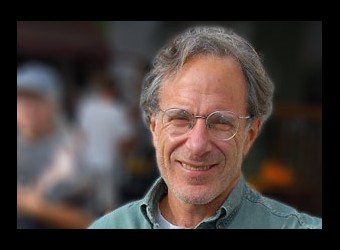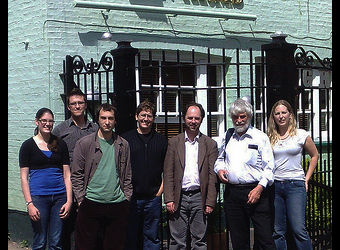If you have seen me with a distracted, preoccupied look on my face over the past three years – a frequent occurrence – it’s because I’ve been toiling on a book about the long, strange odyssey of commoners to secure a place for themselves on the Internet. I am happy to report that I have snapped out of my writer’s trance — my new book is now out!
Viral Spiral: How the Commoners Built a Digital Republic of Their Own, published by New Press, is a history of how ordinary people have used the Internet to create a new cultural universe for themselves – a place that honors freedom, participation, openness and innovation. The commoners have ingeniously created their own software, legal tools and social ethics to enable them to generate new types of “shareable creativity” that cannot be taken private by commercial predators.
!/sites/default/files/imagecache/large/ViralSpiralcover.jpg!
Without the support of government or big corporations, the commoners built their own infrastructure of code and law, upon which they then built countless self-organized commons of knowledge, conversation, photos, music, video, software code, and much else.
The book title, Viral Spiral, draws upon a term from medical science – viral – to refer to the almost-magical ways that new ideas and innovations propagate across the Internet. “Spiral” refers to the ways that the innovations of one Internet cohort rapidly becomes the platform used by later generations to build their own follow-on innovations. The result has been an explosion of brilliant amateur creativity that extends from software, blogs, collaborative websites, remix music and video mashups to new business models, an “open educational resources” movement that aims to democratize learning, and new sorts of science commons that seek to make research and data freely accessible and shareable.
The viral spiral got started in the 1980s with Richard Stallman and the birth of free software – later renamed joined by an offshoot, open-source software. A motley crew of commoners, unhappy with the locks and chains on conventional proprietary software, created programs that were openly available to anyone to help improve, copy and share. Then came Lawrence Lessig and a band of lawyers, artists and computer scientists, who developed a suite of copyright-based licenses that enable people to share and collaborate on the Internet – legally.
This infrastructure – along with the Internet itself — has enabled people to build new types of commons — voluntary social collectives – that are starting to compete with the marketplace. The blogosphere, wikis, online archives, social networking, the Semantic Web, and much more, are part of a revolution that is at once social, economic and political.
Viral Spiral describes the unsuspected powers of the “sharing economy” that has arisen over the past fifteen years, and that shows no sign of slowing down. In the digital republic, new bodies of collective works like GNU Linux, Wikipedia and Flickr can quickly materialize because everyone is invited to participate. With an efficiency that evolutionary scientists would appreciate, commoners can freely borrow from existing works, identify failures and build on successes with lightening-fast speed – out-maneuvering Centralized Media and other institutions of the 20th Century that are slow to adapt. In this new world, the commons does not produce a “tragedy of the commons,” it produces a cornucopia of the commons.
This listing of chapters shows the arc of the book:
Part I: Harbingers of the Sharing Economy
1. In the Beginning Was Free Software
2. The Discovery of the Public Domain
3. When Larry Lessig Met Eric Eldred
Part II: The Rise of Free Culture
4. Investing the Creative Commons
5. Navigating the Great Value Shift
6. Creators Take Charge
7. The Machine and the Movement
8. Free Culture Goes Global
9. The Many Faces of the Commons
Part III: A Viral Spiral of New Commons
10. The New Open Business Models
11. Science as a Commons
12. Open Education and Learning
Conclusion: The Digital Republic and the Future of Democratic Culture
A fuller description of Viral Spiral can be found at the website for the book, http://www.viralspiral.cc. The book can also be downloaded there as a pdf file, under a Creative Commons Attribution-Noncommercial license. (This means that the work can be freely re-used and shared so long as credit is given to the author and the work is not used for commercial purposes. However, my publisher and I both hope you’ll want to buy a beautiful hard-bound copy as well!)
Now that my tongue is well-oiled to talk about the book, I will soon embark upon a book tour to various cities, university towns, and media outlets. One stop will be the USC Annenberg School for Communication and Norman Lear Center in L.A., where I am a senior fellow and have done other projects involving copyright and culture. While my appearances there and other places will probably carry the bill, “Meet the author,” I am frankly more interested in meeting the many commoners out there. Please identify yourself as an OTC reader and make my day!





